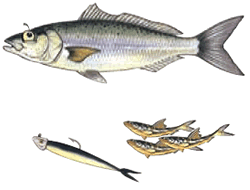Go Fishing - Western Port
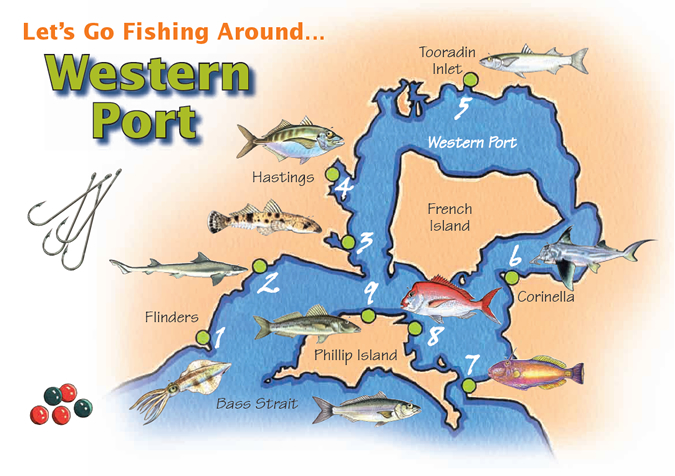
Spot 1 - Flinders Jetty
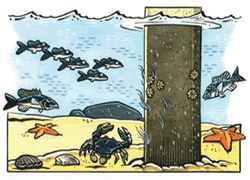
This jetty is located at the end of Bass Street in Flinders on the Mornington Peninsula. This jetty has a reputation for producing excellent squid catches with some very large specimens caught in spring. (Melway Ref: 262 B9)
- The run-in tide is most productive for all species. Cast into sand patches when fishing for whiting. Squid can be caught both during the day and night. Fishing around the pylons will produce wrasse and leatherjackets.
- Fish species: Squid, King George whiting, Australian salmon, silver trevally, wrasse, leatherjackets, barracouta, short-finned pike
- Amenities: Public toilets and parking are available at the pier and shops are nearby. The jetty is located in Bass Park which offers walking trails, barbeque facilities, a playground and sandy beaches.
Spot 2 - Merricks Beach
This beach is located at the end of Merricks Beach Road in Merricks. The long sandy stretch provides roomy for plenty of anglers. (Melway Ref: 192 H12)
- The beach fishes best at high tide, particularly if this occurs early in the morning. An evening high tide can also be productive. Night time is recommended if you wish to catch a gummy shark.
- Fish species: King George whiting, Australian salmon, yellow-eye mullet, flathead, gummy shark
- Amenities: A car park is located at the end of Merricks Beach Road and toilets are located near the yacht club.
Spot 3 - Stony Point Pier
This pier is located at Stony Point on the western side of Western Port. It acts as a port for various vessels including passenger ferries to French Island and Phillip Island. (Melway Ref: 195 F5)
- The pier provides food and habitat for fish of all sizes so casting away from the pier is not always required. Fishing for a few hours either side of high tide is best. Casting soft plastics and metal lures that resemble bait fish can also be productive.
- Fish species: Squid, King George whiting, Australian salmon, silver trevally, yellow-eye mullet, flathead, snapper
- Amenities: Public toilets and a car park are nearby and the general store is across the road. The Stony Point Caravan Park provides accommodation for those wishing to incorporate fishing into an extended stay.
Spot 4 - Hastings Jetty
This jetty is located on Skinner Street in Hastings and provides fishing for popular species all year round. (Melway Ref: 154 K11)
- Fishing around high tide is most productive. Cast into sand patches when fishing for flathead and whiting. Silver trevally can be caught around the pylons.
- Fish species: King George whiting, Australian salmon, silver trevally, flathead
- Amenities: There is a car park at the base of the pier and a public toilet block is a short distance away. Fred Smith Reserve which is on adjoining land has electric barbeque facilities and a playground. There is an indoor swimming pool and cafe next to the pier as well.
Spot 5 - Tooradin Inlet
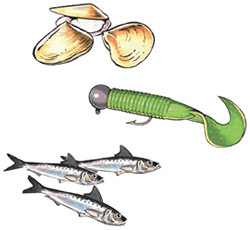
The town of Tooradin is located on this inlet which is on the northern end of Western Port. You can fish from a jetty as well as many ideal spots along the banks. (Melway Ref: 144 A3)
- Using light tackle and some berley will improve results when fishing here. A running sinker rig is suitable for most species. Using a float and small long-shanked hooks for mullet. Fishing is best around high tide.
- Fish species: Bream, yellow-eye mullet, Australian salmon, flathead, silver trevally, King George whiting, estuary perch
- Amenities: Everything is at hand including car parking, toilets, BBQ facilities, picnic areas and shelters. A large playground, shops and cafes are all nearby.
Spot 6 - Corinella Pier
This pier is located at Peter Street in Corinella and is next to the Corinella Foreshore Caravan Park. It is a popular location during holiday periods. (Melway Ref: 612 Q10)
- The deep channel adjacent to the pier allows anglers to target larger species such as gummy sharks, elephant fish and mulloway. Larger hooks and baits need to be used and it is not necessary to cast more than five metres from the pier. A few hours around high tide is best.
- Fish species: King George whiting, mulloway, gummy shark, elephant fish, flathead
- Amenities: Public toilets are situated in the caravan park and a general store is nearby.
Spot 7 - San Remo Jetty
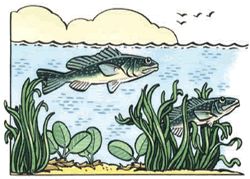
This pier is located on Marine Parade, on the left hand side before crossing the bridge to Phillip Island. It acts as a port for commercial fishing vessels and a deep channel runs across the front of the jetty. (Melway Ref: 634 H7)
- Tidal currents are very strong here so heavy sinkers need to be used, except around slack water which occurs between tide changes. Casting away from the pier is not always required. Fish for a few hours either side of high tide. Casting soft plastics and metal lures that resemble bait fish can also be rewarding.
- Fish species: Squid, King George whiting, Australian salmon, barracouta, silver trevally, snapper, leatherjackets, wrasse
- Amenities: There is a foreshore reserve next to the pier which has toilets, barbeques and a playground. Shops, cafes and plenty of parking are all close by, as is a tackle store.
Spot 8 - Rhyll Jetty
This long jetty is located on at the end of Beach Road in Rhyll and is a popular spot during holidays. Bass yabbies can be pumped for bait on the surrounding mudflats. (Melway Ref: 632 E3)
- Use light tackle at this location. Paternoster rigs with small long-shanked hooks are recommended. A rising tide through to high tide is generally most productive.
- Fish species: King George whiting, Australian salmon, yellow-eye mullet, silver trevally, flathead, garfish
- Amenities: There is a car park at the base of the pier. The Rhyll Caravan Park is a short walk away and the local service station sells food, drinks, bait and tackle.
Spot 9 - Cowes Jetty
The jetty is located at the end of Bass Street in Cowes on Phillip Island. It is a very busy location during holiday periods. The end of the pier provides access to deep water. (Melway Ref: 634 D1)
- This pier is exposed in strong northerly winds. Southerly winds make for more comfortable conditions. A paternoster rig is suitable for most species and a few hours either side of high tide would be the best time to fish.
- Fish species: Squid, King George whiting, Australian salmon, silver trevally, gummy shark, elephant fish, barracouta, snapper, flathead, garfish
- Amenities: Public toilets are nearby and there is a playground in the foreshore reserve. Shops and cafes can be found in the main street.
Popular Species
Australian salmonPeak season: March – September |
|
Elephant FishPeak season: March – May | 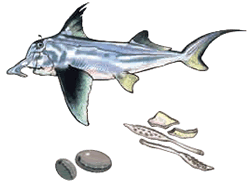
|
FlatheadPeak season: October – March | 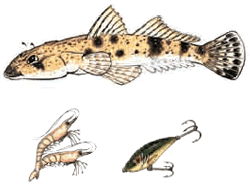
|
Gummy SharkPeak season: March – October | 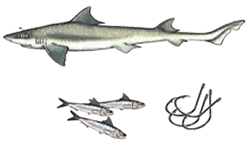
|
King George whitingPeak season: November – April | 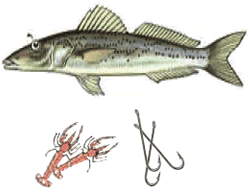
|
LeatherjacketPeak season: Year round | 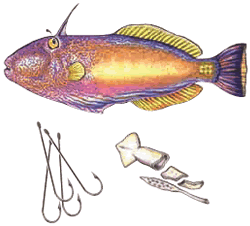
|
Silver trevallyPeak season: October – May | 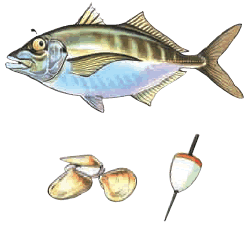
|
SnapperPeak season: October – May | 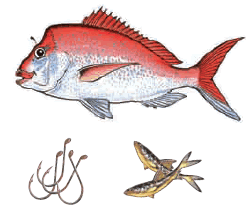
|
SquidPeak season: April – October | 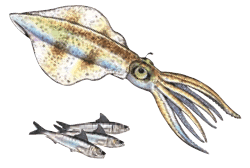
|
Yellow-eye mulletPeak season: March – September | 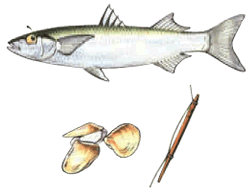
|
Understanding Tides
The movements and feeding behaviour of many species of fish are strongly influenced by the rise and fall of the tide.
- High tides generally allow fish to move into areas where the water is otherwise too shallow.
- Currents caused by the rise and fall of the tide may bring food within reach of fish or allow them to feed more conveniently.
- Therefore the success of a fishing trip can depend on whether you have taken the tide into account when planning when to go.
- Information on the time of high and low tide (and height) can be found in most newspapers, fishing magazines and a variety of websites.
- Tides are caused by the gravitational pull of the moon, and to a lesser degree the sun.
- The interval between successive high tides averages out to about 12 hours and 25 minutes. Low tide occurs roughly half way in between.
- There is a greater variation in water levels between high and low tide both in late autumn and late spring.
Safety
Keep your fishing experience a safe and pleasant one by:
- being careful with hooks, lures and knives
- seeking alternatives to lead sinkers
- handling fish carefully
- being conscious of the dangers associated with water at all times
- protecting yourself against the elements
- informing someone of your trip before you go.

Planning a Trip
Being well prepared for a fishing trip will increase your chances of success and ensure you have an enjoyable experience. Have you packed the following items?
- Suitable fishing rods
- Appropriate tackle (hooks, sinkers, swivels, floats etc.)
- Bait board and knife
- Suitable clothing (hat, waterproof clothing, footwear)
- Food and drink
- Container for bait, fish and ice if required
- Sunscreen
- Your recreational fishing licence (unless exempt)
- Seeking local advice is also recommended
Fish by the rules
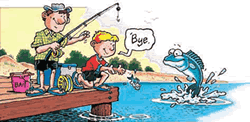
It's important to know the rules that apply to fishing. These include bag limits and minimum size limits for different types of fish. A bag limit is how many fish you are allowed to keep in one day. A minimum size limit is how big a fish needs to be in order for you to keep it. There are also closed seasons for some types of fish. To learn more get a copy of the Victorian Recreational Fishing Guide.

